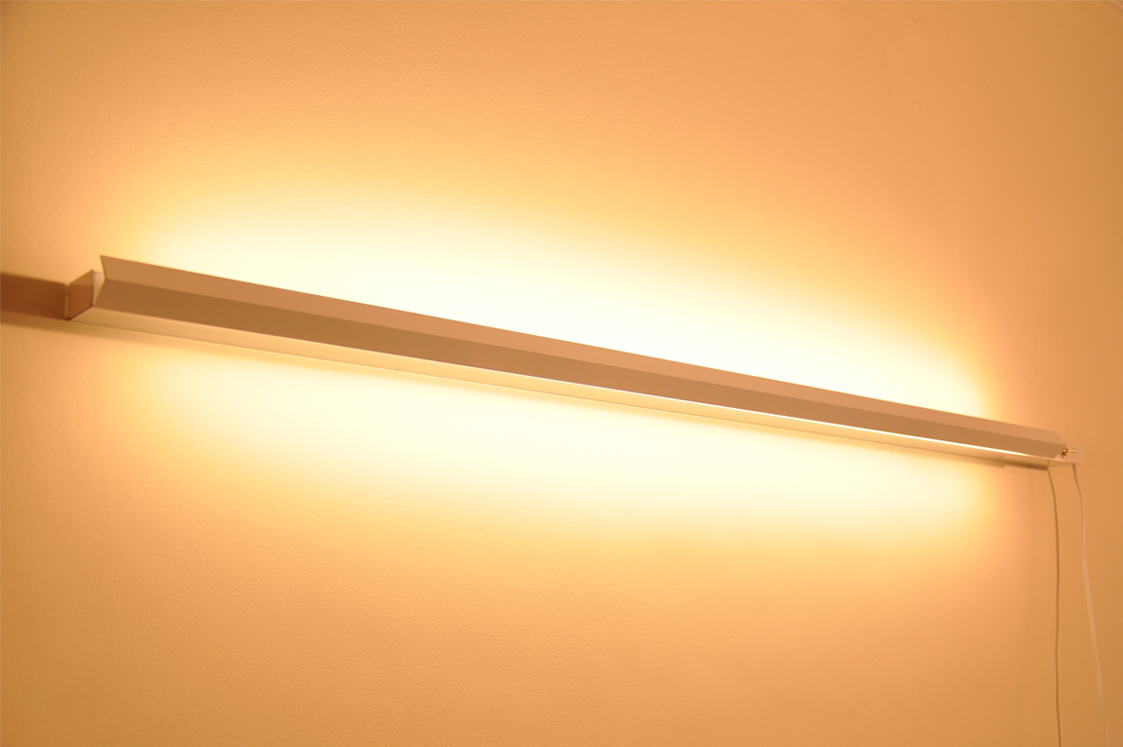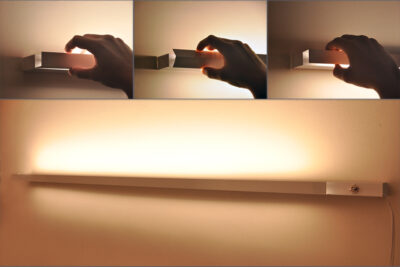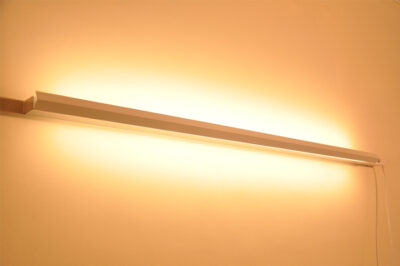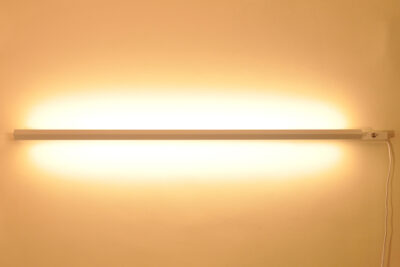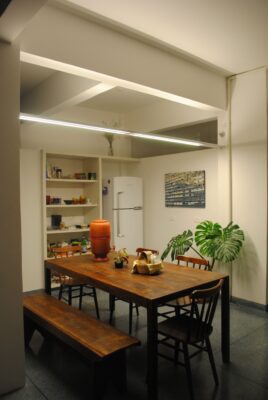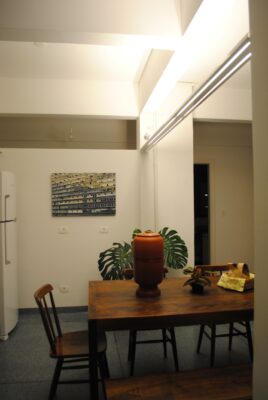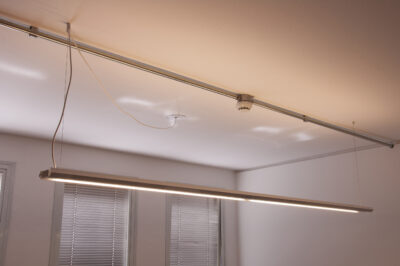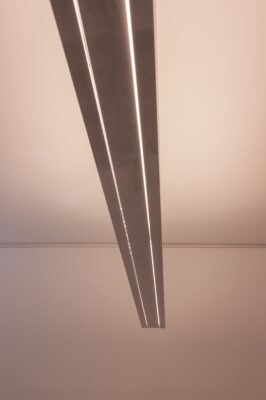1” Sconce and Pendant Light
The “1” Sconce and Pendant Light” was designed through the appropriation of components produced industrially and on a large scale, typically used for other purposes.
The combination of different industrial parts required extensive research into the measurements, gauges, and diameters available in the market at a low cost. Relatively new to the market, T5-type bulbs have a diameter of only 16mm, and their reduced dimension is rarely explored in the design of luminaires that employ them. The 1″ thickness was the smallest dimension possible for the luminaire, placing the spotlight not on the object itself but on the light it emits.
The directionable light responds to the different uses demanded by users; from direct lighting, suitable for reading and work, to indirect lighting, more suitable for leisure and relaxation activities.
The adopted system is economical both in its production and energy consumption. The luminaire can be produced at a low cost without sacrificing quality.
https://www.mcb.org.br/pd/pdPeca.asp?sEdic=52&sMenu=5&sPeca=743
São Paulo, 2012
Award-winning design at the 26th Design Award of the Museum of the Brazilian House with the sconce version and at the 28th award with the pendant version.
The “1” Sconce and Pendant Light” was designed through the appropriation of components produced industrially and on a large scale, typically used for other purposes.
The combination of different industrial parts required extensive research into the measurements, gauges, and diameters available in the market at a low cost. Relatively new to the market, T5-type bulbs have a diameter of only 16mm, and their reduced dimension is rarely explored in the design of luminaires that employ them. The 1″ thickness was the smallest dimension possible for the luminaire, placing the spotlight not on the object itself but on the light it emits.
The directionable light responds to the different uses demanded by users; from direct lighting, suitable for reading and work, to indirect lighting, more suitable for leisure and relaxation activities.
The adopted system is economical both in its production and energy consumption. The luminaire can be produced at a low cost without sacrificing quality.
https://www.mcb.org.br/pd/pdPeca.asp?sEdic=52&sMenu=5&sPeca=743

